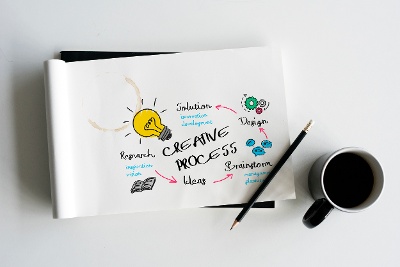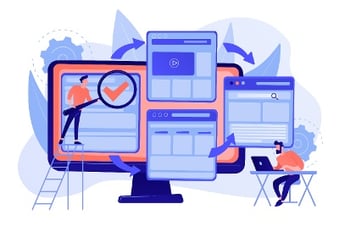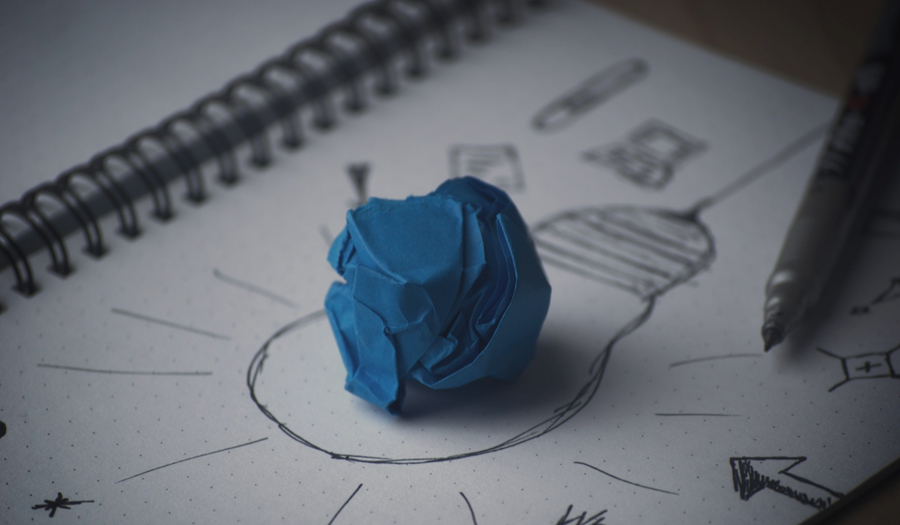Art and science in Design Thinking
Design is an important element for all companies. It is related to aesthetic as well as technical and strategic aspects, since it does not remain...
4 min read
Por Sofía Oviedo | Jan 12, 2023
We face challenges that test our creativity and ingenuity every day, so we must generate ideas to address various challenges. However, only some of those ideas solve a specific task, and not all those ideas are as efficient as we expected. We must apply a series of steps that allow us to pause, go back, and find out what affects people and their experiences. I explain what it is and how Design Thinking is a practical methodology to generate innovative ideas and provide a real solution to our customers.

Index
What is Design Thinking, and how does it work?
As Gartner defines it, design thinking is "a multidisciplinary process that creates solutions to complex and intractable problems in a technically feasible, commercially sustainable, and emotionally meaningful way. Design Thinking teams balance intuitive originality (the hallmark of great designers) with analytical mastery (the hallmark of business leaders and engineers) to create business-centric outcomes that generate transformational, innovative, and strategic change". It is an ideology and process focused on solving complex problems by focusing on the user; this applies to any industry, from developing new products or services to improving business processes.
The way to get hands-on with Design Thinking is through 5 phases that I am going to explain how they work and what each one of them is about:
1. Empathize: The first step is to understand the problem we are trying to solve rather than anticipate providing solutions. It is to understand the needs, shortcomings, and objectives that the users, the customers, want to achieve. Focusing on addressing the main problem and not getting sidetracked by issues arising from a bigger one.
>>Designing with empathy (Design Thinking)<<
You should note that for this stage, it is important:
2. Define the problem: After the empathy stage, all the findings are grouped to know the obstacles present, how they carry out the processes, and the frustrations and pains of the users, to decide which problem to focus on. We do not let ourselves be distracted by the noise caused by the environment with other superficial problems but by those severe nuisances to our customers. In addition, we will define the problem to include the point of view (POV) where we can determine it based on the users' needs and that the problem is framed as viable, reflecting the findings of the empathy stage. It should be a guide that shows where to target resources and efforts.
Some considerations to contemplate:
3. Ideate: We are already in the design process, where many ideas will emerge. Once we understand our clients well and determine the problem to address, it is time to start working on possible solutions, letting creativity flow. In teamwork sessions, we brainstorm ideas, think outside the box, storyboards, and debate logical ideas, which allows us to let our creativity contribute and generate diverse ideas freely.
For these sessions, we should take into consideration the following points:
4. Prototyping: Throughout this stage, it is necessary to experiment with which of the proposed ideas will become tangible; this is why we must create a prototype, which is a rudimentary version of the product or service incorporating the possible solutions of the previously seen stages. It is something that the client or user can manipulate, use and test to see how it is before the official version is released.
It is necessary to develop this stage because:
Develop different prototypes with different ideas. To establish an analysis of why an idea is discarded, why others are not considered, and what can and does not work.
5. Testing: In this fifth stage, we have user testing once the prototypes have been created. It is important that everyone is involved and has a say in the solutions provided. Show innovative solutions to larger teams so everyone can get to know and use the product or service. Be critical in the evaluation; this is a stage with the opportunity to refine the solutions and again to understand what the user or customer thinks.
To put this stage to the test is usually done:
While the development of these stages can be seen as a linear process that follows a sequential order from step one to step five, Design Thinking is flexible. It can go backward, rotate around, and within itself. Depending on what happens in each phase or stage, we must stop, think and redefine it. It is incorrect to believe that it is linear.
Features
I list the main characteristics that make Design Thinking stand out from other methodologies and what is the value of putting it into practice:



Customer experience benefits
Designing better customer experiences requires understanding who they are and what motivates them; this includes knowing their needs, wants, expectations, and behaviors. Once we understand this, we can design products and services that meet their needs. Together with the Design Thinking exercise, we can address those issues that our customers and users transmit to us. For this reason, below are some of the benefits that good execution of Design Thinking can bring to a good customer experience:
Design Thinking should be part of the DNA of organizations. It should be part of their culture so that innovation, especially when dealing with complex problems, is an exercise that is natural to put into practice. If you have any doubts or questions about Design Thinking, I invite you to visit our website, www.imagineer.co, and contact the Strategy team willing to help you.

Design is an important element for all companies. It is related to aesthetic as well as technical and strategic aspects, since it does not remain...

Have you ever wondered how do I win customers over my competitors in addition to incorporating good marketing practices?

Artificial intelligence (AI) has been one of the most impactful technologies in the business world in recent times. It has allowed companies to...